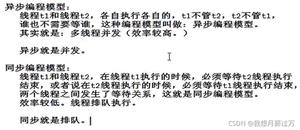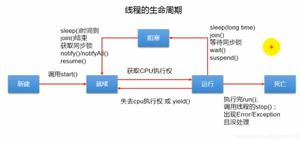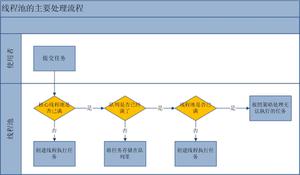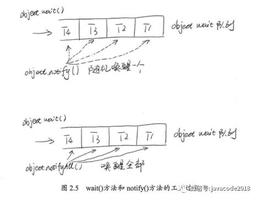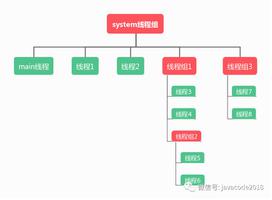Java创建线程三种方式的优缺点
Java创建线程主要有三种方式:继承Thread类创建线程、实现Runnable接口创建线程和实现Callable和Future创建线程。
继承Thread类
public class Thread1 extends Thread {
@Override
public void run() {
for (int i = 0; i < 10; i++) {
System.out.println(getName() + ": " + i);
}
}
public static void main(String[] args) {
for (int i = 0; i < 10; i++) {
System.out.println(Thread.currentThread().getName() + ": " + i);
if (i == 2) {
new Thread1().start();
new Thread1().start();
}
}
}
}
实现Runnable接口
public class Thread2 implements Runnable {
@Override
public void run() {
for (int i = 0; i < 10; i++) {
System.out.println(Thread.currentThread().getName() + ": " + i);
}
}
public static void main(String[] args) {
for (int i = 0; i < 10; i++) {
System.out.println(Thread.currentThread().getName() + ": " + i);
if (i == 2) {
Thread2 thread2 = new Thread2();
new Thread(thread2).start();
new Thread(thread2).start();
}
}
}
}
实现Callable接口
FutureTask类包装Callable对象时,封装了Callable对象的call()方法的返回值。
class Thread3 implements Callable {
@Override
public Integer call() throws Exception {
int i = 0;
for (; i < 10; i++) {
System.out.println(Thread.currentThread().getName() + ": " + i);
}
return i;
}
public static void main(String[] args) {
Thread3 thread3 = new Thread3();
FutureTask<Integer> futureTask = new FutureTask<Integer>(thread3);
for (int i = 0; i < 10; i++) {
System.out.println(Thread.currentThread().getName() + " :" + i);
if (i == 2) {
new Thread(futureTask, "有返回值的线程").start();
}
}
try {
System.out.println("子线程返回值: " + futureTask.get());
} catch (InterruptedException e) {
e.printStackTrace();
} catch (ExecutionException e) {
e.printStackTrace();
}
}
}
三种方式优缺点
采用实现接口(Runnable和Callable)的方式,线程类还可以继承其他的类。实现接口的线程对象还可以用来创建多个线程,可以实现资源共享。缺点是不能使用this指针来获取线程的名字等。
采用继承Thread类的方式,线程不能继承其他的类,但是Thread类中有getName方法,因为可以直接使用this.getName()来获取当前线程的名字。
总结
以上是 Java创建线程三种方式的优缺点 的全部内容, 来源链接: utcz.com/z/318823.html



